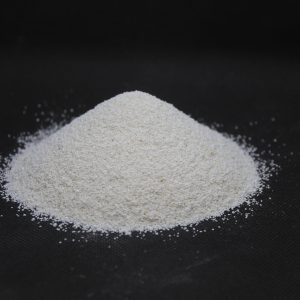-
Limestone used in glass production is a high-purity material selected for its chemical consistency and low levels of impurities. It serves primarily as a source of calcium oxide (CaO), which plays a stabilizing role in the glass structure. For this purpose, only limestone with minimal levels of iron, magnesium, and other color-altering elements is acceptable, as purity directly impacts the clarity and quality of the final glass product.
-
Limestone occurs naturally in many sedimentary rock formations and is quarried specifically for industrial-grade applications like glass making. The most suitable deposits are those with dense, fine-grained textures and high calcium content. Once extracted, the limestone is crushed and screened to the required size before being mixed with other raw materials such as silica sand and soda ash.
-
In the glass-making process, limestone helps reduce the melting temperature of the silica, making the process more energy-efficient. It also influences the viscosity of the molten glass, improving flow characteristics and forming behavior. These properties are critical for large-scale industrial operations where control over temperature and consistency directly impacts product yield and quality.
-
Limestone contributes to the chemical durability and mechanical strength of glass. Its inclusion helps the final product resist weathering, chemical corrosion, and thermal stress, making it suitable for a wide range of applications, from construction-grade flat glass to food-safe container glass. It also minimizes devitrification, a process that can cause imperfections in the cooling phase.
-
Because of its stabilizing and clarifying role, limestone is essential in the production of many types of glass, including window glass, beverage bottles, laboratory glassware, and specialty optical glass. Its availability, cost-effectiveness, and performance make it one of the most important raw materials in the global glass manufacturing industry.
Uses of Limestone in Glass Making
Limestone is added to glass batches to improve chemical durability, helping the glass resist weathering, corrosion, and degradation over time.
When combined with silica and soda ash, limestone helps lower the overall melting temperature of the glass batch, reducing energy consumption during manufacturing.
Limestone enhances the structural integrity of the final product, making the glass more resistant to breaking, scratching, and thermal stress.
By modifying the viscosity of molten glass, limestone contributes to smoother forming and shaping processes in industrial glass production.
High-purity limestone with low iron content is crucial for producing clear or colorless glass, particularly for optical glass or specialty containers.
From flat glass and fiberglass to bottles and laboratory equipment, limestone is used in a wide range of glass products due to its chemical consistency and functional benefits.


